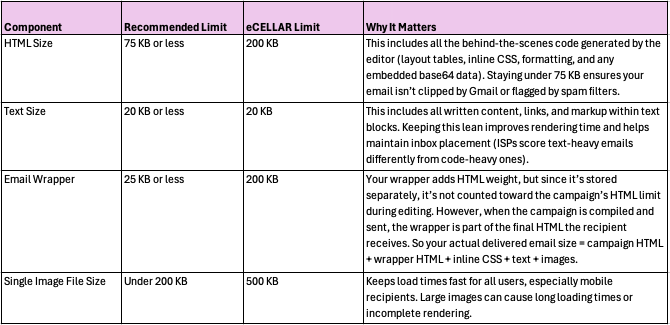Email campaigns are one of the most powerful ways to connect with guests, members, and customers. When an email gets too large or overly complex, it can slow down, get clipped, or miss the inbox. Keeping your campaign lean improves performance and helps your message reach the right place.
What Is Email Delivery vs Deliverability?
Delivery answers a simple question: did the recipient mail server accept the message. If the server says yes, the email is considered delivered. Delivery can fail for reasons like an invalid address, a full mailbox, or server issues, which show up as bounces.
Deliverability goes a step further and asks where the delivered message ended up. Primary inbox, a secondary tab, or the spam folder. Deliverability is influenced by sender reputation, list quality, complaint and unsubscribe rates, content and code quality, authentication records such as SPF, DKIM, and DMARC, and engagement over time. Strong deliverability means your messages consistently reach the inbox where customers actually see and act on them.
In short, delivery is the gate, while deliverability is the placement. Aim for both by keeping lists clean, sending relevant and lightweight campaigns, and monitoring metrics like opens, clicks, complaints, and spam placement.
Keep It Small, Keep It Seen
For the best email deliverability, aim to keep your total email size small and efficient. These limits reflect both industry practice and eCELLAR safeguards.

How Large Emails Hurt Performance
Spam filters notice
Mailbox providers consider message size when evaluating your email. Messages larger than 100 KB often appear suspicious and may be filtered away from the inbox.
Load times lag
Big images and complex layouts take longer to render. When readers have to wait, especially on mobile, they often close or delete the message before it finishes loading.
Gmail clipping
Gmail clips messages above about 102 KB and hides the bottom of the content. This is often where your footer or unsubscribe link appears, which creates a poor experience and a compliance concern.
Data overload
Large campaigns can quickly consume mobile data. That frustrates readers and discourages them from opening future messages.
Filter Smart Before You Send
Before sending, clean your audience. Exclude bounced contacts and blank addresses, and send only to people who have opted in. This improves deliverability, keeps engagement metrics healthy, and protects your sender reputation.
There is also a technical benefit. By excluding these contacts from the start, you reduce how many records the bulk mailer receives from the database and how much data it must process. Less data means a faster and more reliable send.
How to Reduce Email Size Without Losing Impact
Compress images
Optimize images before adding them. Use compression tools such as TinyPNG or ImageOptim to reduce file size without noticeable loss of quality.
Link instead of embed
Host videos or large files externally and include a link rather than embedding them directly in the message.
Streamline HTML
Remove unnecessary comments, redundant code, and excess CSS. Clean code loads faster and keeps the file light.
Use web safe fonts
Stick with standard fonts where possible. Custom fonts add weight and can render inconsistently.
Limit complex content
Animated GIFs and rich media can quickly increase size. Use them sparingly and ensure they are well optimized.
Test before sending
Use eCELLAR’s new tools to check current HTML size and text size vs. maximum allowance.
The Takeaway
Smaller and smarter emails lead to faster load times, better inbox placement, and a more consistent experience for your customers. Keep HTML under 75 KB, text under 250 KB, individual images under 200 KB, and send only to engaged, opt-in contacts. You will avoid clipping, reduce load times, and protect your sender reputation, all while lowering your cost.
For wineries looking to improve email deliverability and optimize marketing performance, these best practices are an easy way to make every send count.
DTC Winery Software, Winery CRM, POS System


